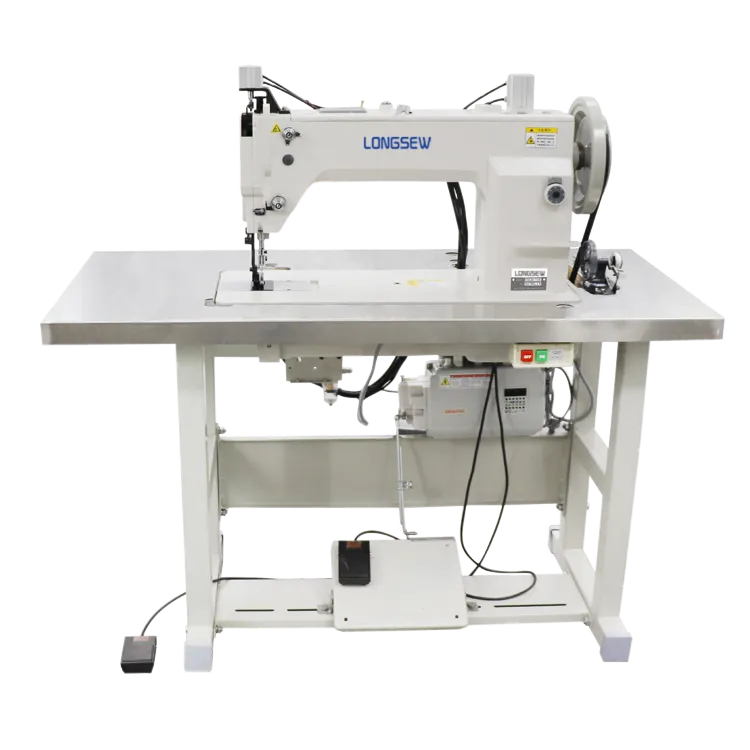automatic cutting sewing machine
The Rise of Automatic Cutting Sewing Machines in Modern Manufacturing
In the wake of technological advancement, the textile industry has witnessed a dramatic transformation over recent years. One of the most significant innovations is the automatic cutting sewing machine, a revolutionary tool that has redefined productivity, accuracy, and efficiency in garment production. These machines are not only optimizing the manufacturing process but are also setting new standards for quality and precision in the textile market.
Understanding Automatic Cutting Sewing Machines
Automatic cutting sewing machines integrate both cutting and sewing processes into a single, automated operation. Traditionally, garment production involved a tedious sequence of manual cutting followed by sewing, which was not only time-consuming but also prone to human error. With the introduction of automatic machines, manufacturers can streamline their workflow, significantly reducing the time from design to final product.
The technology behind these machines utilizes advanced software for pattern design and automatic cutting systems equipped with powerful blades. These systems can efficiently cut multiple layers of fabric simultaneously, ensuring that patterns are executed with high precision. Coupled with automated sewing capabilities, the entire process is expedited, allowing manufacturers to meet market demands swiftly.
Advantages of Automatic Cutting Sewing Machines
1. Increased Efficiency The primary benefit of these machines is their ability to perform tasks faster than human workers. They can operate continuously with minimal downtime, maximizing production output and meeting tight deadlines.
2. High Precision and Consistency The accuracy of automatic cutting machines reduces fabric waste, ensuring that every piece is cut to exact specifications. This precision not only enhances the quality of the finished product but also maintains consistency across large production runs, which is crucial for brand integrity.
automatic cutting sewing machine

3. Labor Cost Reduction With automation, manufacturers can reduce their reliance on manual labor. While some skilled labor is still necessary for complex tasks, automatic machines handle repetitive processes, leading to lower labor costs over time.
4. Adaptability Advanced automatic cutting sewing machines can be programmed for different designs and fabrics. This adaptability is vital in an industry characterized by rapidly changing fashion trends and consumer demands. Manufacturers can quickly switch between different styles without significant downtime.
5. Enhanced Safety Modern automatic machines are designed with safety features that protect operators from injuries that can occur with traditional cutting and sewing methods. This focus on safety is essential in maintaining a safe working environment for staff.
Challenges and Considerations
Despite their numerous advantages, the transition to automatic cutting sewing machines is not without challenges. Initial costs for purchasing and implementing these machines can be high, making it a significant investment for smaller manufacturers. Additionally, the workforce may require retraining to operate and maintain these advanced systems effectively. Manufacturers must also consider the potential for technological obsolescence, necessitating regular updates and maintenance to keep up with industry standards.
The Future of Textile Manufacturing
As the industry continues to evolve, the role of automatic cutting sewing machines is expected to grow. Innovations such as artificial intelligence and machine learning may further enhance the capabilities of these machines, allowing for even greater efficiency and adaptability.
In conclusion, automatic cutting sewing machines represent a pivotal development in the textile manufacturing landscape. Their ability to increase efficiency, ensure precision, and reduce labor costs makes them an indispensable asset in modern garment production. As manufacturers increasingly embrace automation, the future of the textile industry looks poised for continued transformation, driven by technological advancement and innovation. Businesses that adopt these cutting-edge tools are likely to stay competitive in a rapidly changing market while delivering high-quality products to consumers.
-
Leather Sewing Machine: The Industrial Standard for Tough MaterialsNewsJul.18,2025
-
Sail Making Machine: Heavy-Duty Stitching for Industrial and Marine NeedsNewsJul.18,2025
-
Sling Sewing Machine: The Backbone of Heavy-Duty FabricationNewsJul.18,2025
-
Leather Sewing Machine: Precision for Heavy-Duty StitchingNewsJul.18,2025
-
Big Bag Sewing Machine: Powering the Future of Bulk PackagingNewsJul.18,2025
-
FIBC Sewing Machine: Essential Equipment for Bulk Bag ProductionNewsJul.18,2025
-
Heavy Duty Leather Sewing Machine: A Must-Have for Professional LeatherworkNewsMay.28,2025





























